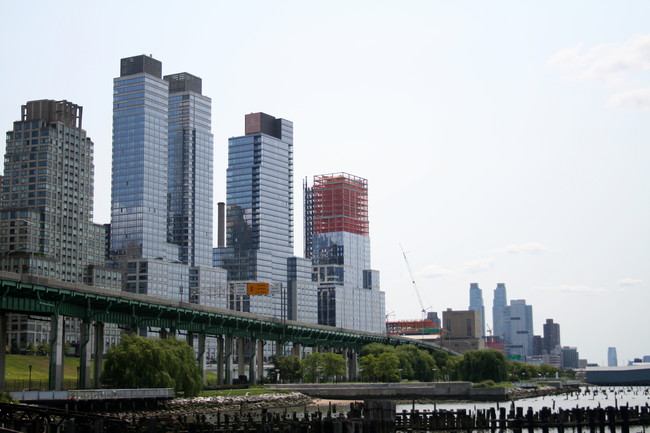
The ignominious cry of “separate but equal” is rarely heard these days, nevermind in the offices of architects, developers, city government, and the court of public opinion. But that’s exactly what Linda Rosenthal, a local New York State Assembly Representative, called the design of developer Extell’s 40 Riverside Boulevard, now under construction. The decision to build a “poor door” in the building’s rear, a separate entrance for the building’s 55 affordable rental units, has divided commentators: is the real story here our time’s de facto socioeconomic segregation or is it New York City’s failure to provide adequate housing policy? Where does this leave architects in an acrimonious debate among the public and developers?
This controversy was more than a year in the making. In mid August of 2013, the developer Extell applied for the benefits of New York City’s Inclusionary Housing Program with its 40 Riverside Boulevard residential tower, part of a residential development stretching from West 61st to 72nd Street in Manhattan. 40 Riverside is 33 stories, with 219 market-rate condominiums and 55 affordable rental units. New York City’s Inclusionary Housing program, begun in 1987, provides developers who voluntarily build permanent affordable units with increased square footage (also known as FAR). These units are available to those who make 60% of the Area Median Income and receive reduced rent rates, such as a two-bedroom unit for $1,099. So, while developers may receive less rent from certain apartments, a building with 20% affordable units receives a 33% more square footage. News of the design prompted the West Side Rag, a local news blog, to coin the term “poor door.”
However, the program has gone through many revisions over the years, and in 2009 the Bloomberg administration revised it to allow “segmented” housing that groups affordable units within a building and makes a “poor door” feasible. Instead of being dispersed throughout the building, affordable units could be organized in a single block from the ground floor and upwards. This is precisely what Extell did and 40 Riverside catapulted back into the news on July 20, 2014, when the New York Post reported that the building design, “poor door” and all, was approved by the city.
The De Blasio administration has vowed to amend these changes but modifying the building, already well under construction, isn’t feasible. It’s reasonable to expect fewer “poor doors” in the future–De Blasio campaigned on making the city habitable by the middle class–and there aren’t many extant “poor doors.” An August 2013 report from The Real Deal names only one building as having a true “poor door,” 4 North Fifth Street, which is part of developer Toll Brother's large Williamsburg waterfront development. Many other mixed-income buildings limit affordable residents’ access to building amenities.
Interestingly, responses among publications have varied broadly but none have mentioned the architect, Goldstein Hill & West Architects. While CurbedNY and the Boston Globe voiced criticism of the design, the New York Times, Crains, and Business Insider balanced the excoriating statements of city politicians with the developer’s need to protect the value of their investment. Some have sought to redirect attention from the door to the wider housing crisis in New York, such as The Guardian and Salon, with Vox and the NY Post going so far as to assert the benefits and legality of the “poor door” over its symbolic detractions. The architects have not been quoted by any news source and the question remains in the realm of policy and rhetoric. (Neither Goldstein Hill & West nor Extell responded to requests to comment for this story.) Is there an architect’s perspective (or stake?) in this debate?
From one perspective, the “poor door” is indeed just a consequence of housing policy. Inclusionary zoning gives the city quality affordable housing in upscale neighborhoods when buildable land, air rights, and public funding are scarce. The downside is that, even if segmented affordable units are banned, the program will still be voluntary and the developer can always back out if the deal isn’t sweet enough. Moreover, another argument states that the city should simply sell extra FAR in exchange for funding that can support more extensive social housing elsewhere on less expensive property.
Architecturally, the “poor door,” which requires extra lobbies and elevator cores, is redundant and wasteful. Even if architects seem less than eager to jump into the debate, they should realize that the debate over the “poor door” is one about the social importance of architecture itself: if 40 Riverside Boulevard is just a building, a simple physical fact of construction, then the “poor door” is just good fences making good neighbors. However, if we think that architecture says anything about our social ideals and values, then architects should make their voices heard in this discussion.

Post a comment to this article
Report Abusive Comment